Publications and Media
- Books
- Film, Podcasts, and other Media
- Articles and Book Chapters
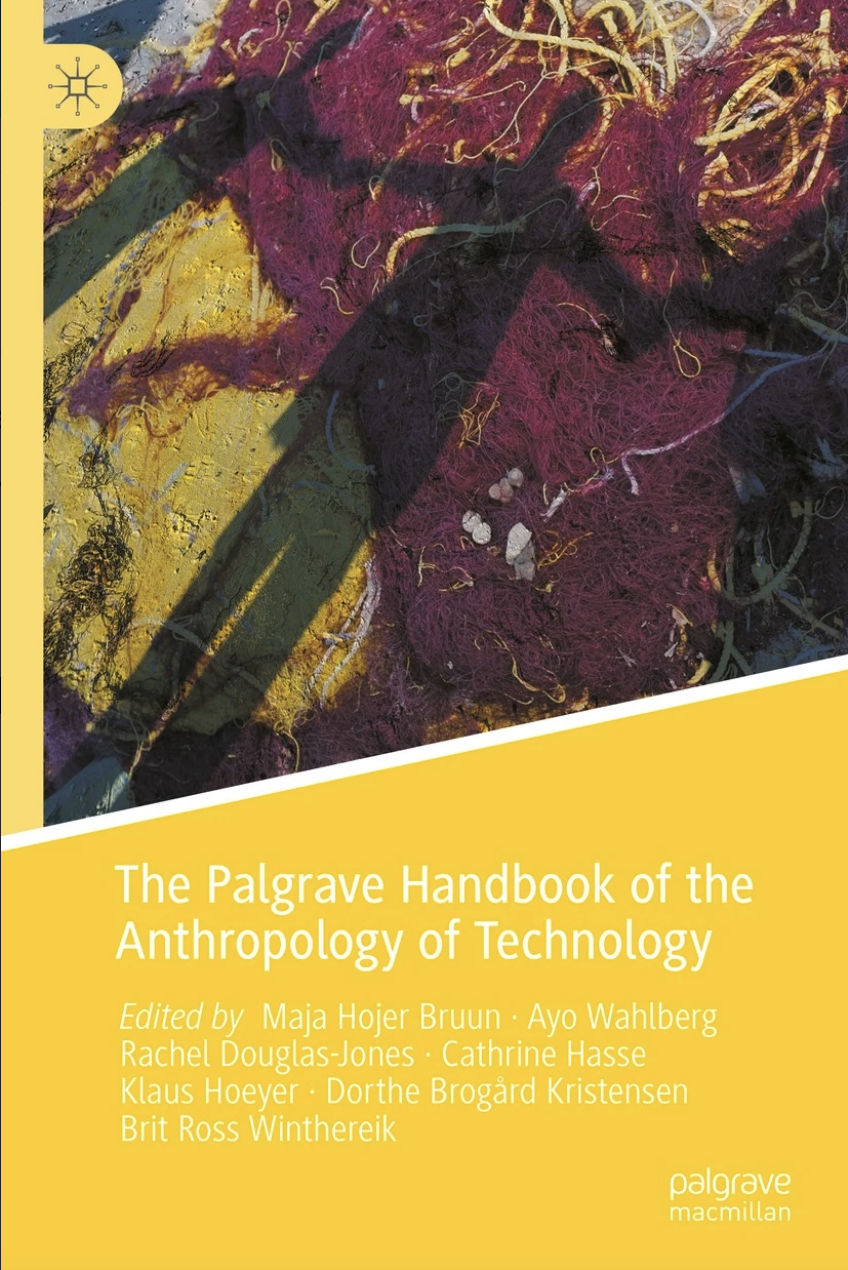
Techlash encapsulates a breaking point reached with the critique of technology companies. To investigate how this whirlwind of rage, inquiry, and accountability affects the lives of tech workers, we conducted interviews with 19 tech workers. Our methodological approach and contribution adopts a style of writing and analysis associated with anthropologist Kathleen Stewart, where we focus on the affective textures of everyday life in an attempt to redirect the temptation to representational thinking to a slowed ethnographic practice. This paper dwells on the affects of tech workers facing critique and scrutiny. Through this approach, we find that emotional habitus conditions the possibilities of personal and political action and inaction in response to critique. By emotional habitus, we refer to the emotional dispositions honed among tech workers by tech culture's rationality and optimism. This habitus must shift if people are to access new ways of relating and acting. We argue for more fruitful attitudes and practices in relation to critique.

During a week in September of 2016, the Fuerzas Armadas Revolucionarias de Colombia (Revolutionary Armed Forces of Colombia, FARC) held its tenth guerrilla conference, the Décima, in the plains of Yarí in southern Colombia. The guerrilla group blew the event open to the media, orchestrating a festival cum eco-conflict-tourism extravaganza to mark its transition to legal politics. This photo/ethnographic analysis of the Décima illuminates the FARC's symbolic and discursive formation at a pivotal transitional moment and how the group imagined its political possibilities at the cusp of its demobilization. By engaging with Guy Debord's concept of ‘integrated spectacle’, I argue that the FARC's vanguardist structure led it to brand itself as the leader of a broad political mobilization, even as it struggled to retain the allegiance of its former combatants. The article considers the ongoing relevance of the integrated spectacle for scholars and activists and opens a path for further research into the politics of spectacle in Latin America.
Link: https://www.tandfonline.com/doi/full/10.1080/00335630.2024.2420968#abstract
Abstract: Created by street artist Shepard Fairey, the protest poster, “We the People are Greater than Fear,” emerged as a powerful visual response to the 2016 election of Donald Trump. Though celebrated as a progressive symbol of inclusion, we argue the poster, perhaps unwittingly, reinforces some of the very prejudices it seeks to confront by associating Muslimness with suspicion, foreignness, and fear. Using “Greater than Fear” as a case study, this essay contributes to scholarship combining critical affect theory with rhetorical studies by theorizing affective blockage as a means of understanding the ways affect contributes to the resilience of hegemonic narratives by preventing certain meanings from surfacing. We argue the poster reveals a cautionary lesson about how affect can obscure critique of cultural texts created with progressive intent, inadvertently bolstering softer, more subtle forms of racism embedded in liberal contexts. We also discuss the importance of interrogating rehearsed affective associations that, by virtue of their familiarity, seem normal and acceptable but ultimately reinforce exploitative conceptions related to identity categories such as race, religion, sexuality, class, and gender. We conclude with insights for rhetorical scholars about how affective associations can enable ostensibly liberal discourses while at the same time preventing their critique.
FAKE NEWS AND THE COVID KIT: AN ANALYSIS OF DISCURSIVE PRACTICES OF SCIENCE COMMUNICATORS AND MISINFORMATION ON TWITTER
In this research, I analyzed messages from science communicators in the social media diffusion space of Twitter, observing three of the most prominent voices of Brazilian scientific communication that seek to clarify questions about the "cure" and treatment of COVID-19, understanding this theme is impregnated with fake news. In addition, denialist replies to these messages seeking for the interdiction of scientific discourses were analyzed. Thus, it was possible to measure the power of this misleading information in prompting social questioning and discredit towards science itself, in addition to making it clear how the politics of truth is connected to the current historical moment and how institutions assume it, making their desired truths a statute for the prevailing truth.
This work discusses the relationship between the will for truth regarding COVID-19 vaccination and the different discursive groups in the so-called society of platform on Twitter. Specifically, this research is conducted through (1) understanding the network structure through Social Network Analysis and (2) evaluating the discourses of the groups based on the analytical concept of ‘plataformization of truth.’ Both the proposition of this concept and the contextualization of this research are rooted in Michel Foucault’s tools. Mixed methods are used to analyze the data collected on vaccination from December 2020 to January 17, 2021, on Twitter. Social Network Analysis was used to assess the composition of retweets on the topic, enabling the identification of antagonistic groups in the network. Subsequently, the concept of platformzation of truth is applied to qualify the content of a subset of the collected sample. The results indicate that two discursive groups were evident on the social network platform, with one cluster displaying an anti-vaccine stance and two clusters forming the pro-vaccine wing. The pro-vaccine wing employs different methods to disseminate the will for truth in favor of vaccination, with one group using humor and memes, and another group using predominantly scientific, journalistic, and/or political language. In the case of the anti-vaccine group, the discourse revolves around distrust of vaccines combating the coronavirus, especially CoronaVac. As a limitation, it should be noted that data collection is carried out from a segment of social media on a specific subject, which does not portray the entirety of the content present on the platform regarding that subject.
Patrick Anderson, Christina Aushana, Caroline Collins, ‘When We are in Crisis’: Youth-Centered Transitional Justice, Police Violence, and Political Imaginaries, International Journal of Transitional Justice, 2022;, ijab034, https://doi.org/10.1093/ijtj/ijab034
This article describes youth involvement in the voter-mandated transition to a fully independent, powerful community commission overseeing the San Diego (California) Police Department. We begin by describing the historical context of police violence against communities of color in San Diego, and previous attempts to practice transparency and accountability in public safety. We then situate our work with local high school students to engage directly in the transition process, and to imagine future models of public safety with youth justice at its core.
Kathryne Metcalf, Affective Economies in Blood Banks and Biobanks: Vital Accounting from US Transfusion Medicine to Genetic Research, 1935–1990, Social History of Medicine, Volume 35, Issue 2, May 2022, Pages 369–388, https://doi.org/10.1093/shm/hkab091
Medical blood banks and research biobanks are frequently figured as immobile middlemen in the larger machinations of biomedicine, possessing little power to influence the meaning or mobilisation of the biomaterials they accumulate. However, as the institutions that facilitate the collection and circulation of blood for a variety of purposes, blood and biobanks—much like their financial namesakes—legitimate certain practices and constitute the conditions of possibility for others. By following the ‘banking’ metaphor from its origins in 1930s US blood banking through global research specimen collection in the latter half of the century, this essay argues that economic rhetoric has worked to reproduce systems of classed and raced inequity within the circulation of blood through US medicine and research, in turn shifting the affective valences of raced and classed bodies as donors, patients and research subjects.
Christo Sims; Green Magic: On Technologies of Enchantment at Apple's Corporate Headquarters. Public Culture 2022; 9584778. doi: https://doi.org/10.1215/08992363-9584778
Apple's corporate headquarters in Silicon Valley has become an object of public fascination for its technical marvels and green magnificence. However, architectural critics and urbanists have widely critiqued the campus for being socially retrograde and ecologically injurious. This essay queries this divergence in public responses to Apple's headquarters by examining how the campus has been designed to counter a growing disenchantment with neoliberalism, its technologies, and its environmental defilements. In doing so, the essay argues for the analytical potential of adapting anthropological theories of enchantment and magic to the study of contemporary uses of the built environment for branding and public relations purposes.
“Living Theory: Gender Play and Learning to Live a Life Less Ordinary” in Gender Replay: Reflections on Youth, Feminism, and Schools. 2022. Oeur, F.O. and C.J. Pascoe (eds.). New York: NYU Press.
“Learning, Technology, and the Instrumentalization of Critique” in The Anthropology of Technology: A Handbook. 2022. London: Palgrave.
Sivakumar, Akshita. “Materialities of Shiny Surfaces: A Case of Chrome.” In Designing the Computational Image, edited by Theodora Vardouli and Daniel Cordoso Llach. Applied Research and Design Publishing, 2022 (forthcoming).
Forthcoming
PALOS PONS, Manel; HALLIN, Daniel C.. Press Freedom and Media Reform in a Populist Regime: How Ecuadorian Journalists and Policy Actors See the Correa Era. International Journal of Communication, [S.l.], v. 15, p. 18, feb. 2021. ISSN 1932-8036. Available at: <https://ijoc.org/index.php/ijoc/article/view/15156>.
"In this article, we analyze the case of media policy under Rafael Correa's populist presidency (2007-2017) based on interviews with journalists and media policy actors, in which we explore their views on state regulation of the media, the effect of Correa’s media policy on press freedom, and the evolution of journalistic professionalism in Ecuador. As we shall see, most of our interviewees supported state regulation of the media in principle. They were divided about the effect of Correa’s policies on press freedom, although the majority were sharply critical of important aspects of Correa’s policy. Finally, and surprisingly, most believed that journalism had become more professional during the Correa era. We argue that the negative concept of press freedom, in which only state oppression seems to be the threat to freedom of the press, is too narrow to comprehend a case like Ecuador, where a populist regime triggered bold media reforms, and we need to move instead toward a multidimensional and historical perspective that considers the full range of influences on the difficult development of an independent, professionalized, and democratic media, considering the role of the state within that larger context".
"Our analysis focuses on the context of a populist regime in a developing country where democratic institutions and the media that serve them have always been shaky. This is, in general terms, a common context around the globe. But it would probably be naïve to imagine that the issues it raises are confined to such conditions, without relevance to "advanced” Western democracies. Shifts in the structure of media, in media policy in the context of neoliberal deregulation, and in party systems have produced increased media polarization, rising partisanship, and a worrisome spread of new types of propaganda in many advanced democracies as well, and they too may need to confront a debate about negative and positive conceptions of press freedom and the discussion about how independent, democratic media can be reconstructed".
(2021) “So, it’s like you’re swimming against the tide”: Didactic avowals and parenting as intersectional Muslim women in the United States, Journal of International and Intercultural Communication, DOI: 10.1080/17513057.2021.1896768
Muslim parents in the United States negotiate their intersecting identities and roles as parents amidst increasing (white) nationalism and anti-Muslim racism. In this qualitative study, we draw on cultural identity theory (CIT) to examine how sixteen cis-heterosexual/educated/able-bodied Muslim women parenting children in the United States make sense of their identity negotiations as individuals and parents. Our analysis identifies three overlapping themes highlighting struggles and resilience while parenting. We offer the concept of “didactic avowals” that describes contextually-contingent avowals aimed at instructing and disrupting hegemonic stereotypes and conclude by discussing the implications of these findings in light of CIT.
"I am indebted to conversations with cohort members and faculty in my core COGR seminars at UC San Diego for undoubtedly shaping my thinking as I worked through multiple revisions of this paper as well as to my first year advisor, Dr. Caroline Jack, for her encouragement to find time to write." ~Marwa I. Abdalla
https://www.tandfonline.com/eprint/59NK8P8ZESWFGVCIQMZA/full?target=10.1080/17513057.2021.1896768
Shawna Kidman; The Disneyfication of Authorship: Above-the-Line Creative Labor in the Franchise Era. Journal of Film and Video 1 January 2021; 73 (3): 3–22. doi: https://doi.org/10.5406/jfilmvideo.73.3.0003
Geiger, R., Howard, D., & Irani, L. (2021). The Labor of Maintaining and Scaling Free and Open-Source Software Projects. Proc. ACM Hum.-Comput. Interact. 5, CSCW1, Article 175. Open Access version here
Norman Makoto Su, Amanda Lazar, and Lilly Irani. 2021. Critical Affects: Tech Work Emotions Amidst the Techlash. Proc. ACM Hum.-Comput. Interact. 5, CSCW1, Article 179 (April 2021), 27 pages. https://doi.org/10.1145/3449253
Techlash encapsulates a breaking point reached with the critique of technology companies. To investigate how this whirlwind of rage, inquiry, and accountability affects the lives of tech workers, we conducted interviews with 19 tech workers. Our methodological approach and contribution adopts a style of writing and analysis associated with anthropologist Kathleen Stewart, where we focus on the affective textures of everyday life in an attempt to redirect the temptation to representational thinking to a slowed ethnographic practice. This paper dwells on the affects of tech workers facing critique and scrutiny. Through this approach, we find that emotional habitus conditions the possibilities of personal and political action and inaction in response to critique. By emotional habitus, we refer to the emotional dispositions honed among tech workers by tech culture's rationality and optimism. This habitus must shift if people are to access new ways of relating and acting. We argue for more fruitful attitudes and practices in relation to critique.
Cedric Deslandes Whitney, Teresa Naval, Elizabeth Quepons, Simrandeep Singh, Steven R. Rick, and Lilly Irani. 2021. HCI Tactics for Politics from Below: Meeting the Challenges of Smart Cities. In CHI Conference on Human Factors in Computing Systems (CHI ’21), May 8–13, 2021, Yokohama, Japan. ACM, New York, NY, USA, 15 pages. https://doi.org/10.1145/3411764.3445314
As crucial public functions are transferred to computer systems, emerging technologies have public implications that are often shaped beyond public influence and oversight. "Smart city" and "modernization" projects are just some examples of such transformations. This paper focuses on struggles over the acquisition, control, and maintenance of these public, digital infrastructures. We focus on the forms of HCI knowledge and practice that proved useful to a coalition of community organizations claiming rights of input into and political oversight over surveillance technology. Their claims were a response to their exclusion from decision-making about smart city implementation in San Diego. We offer tactics "from below" as a way to attune HCI to the needs and practices of those excluded from power over widespread technology infrastructures. Ultimately, we argue that HCI cultivates a variety of capacities beyond design and redesign that can strengthen struggles to shape real-world technologies from below.
Irani, Lilly; Hussein, Mikaiil; Zschiesche, Peter; Tandon, Udayan; Arcilla, Enrique; Hickman, Louise; Goldsmith, Montana; Singh, Simrandeep; Khovanskaya, Vera
Irani, Lilly, Hussein, Mikaiil, Zschiesche, Peter, Tandon, Udayan, Arcilla, Enrique, Hickman, Louise, Goldsmith, Montana, Singh, Simrandeep, & Khovanskaya, Vera. (2021). Transportation for Smart and Equitable Cities: Integrating Taxis and Mass Transit for Access, Emissions Reduction, and Planning. Zenodo. https://doi.org/10.5281/zenodo.5225091
Policy report synthesizing independent research on impacts of transportation network companies (TNCs) such as Uber and Lyft on local safety, economies, and social equity. Outline of a vision for creating publicly regulated and supported "first mile last mile" transportation" that overcomes these issues.
Irani, L., & Whitney, C. (2021). Broken Promises of Civic Innovation: Technological, Organizational, Fiscal, and Equity Challenges of GE Current CityIQ. UC San Diego. Retrieved from https://escholarship.org/uc/item/96q771w6
The claimed public benefits of the Intelligent Cities project, billed as the 'the World’s Largest Smart City Platform' by thecity, were promoted as creating data for sustainability, promoting civic innovation, and saving energy on lighting. The City states that this project 'is a tremendous technological benefit to the city and our citizens', and that 'from easier parking and decreased traffic congestion, enhanced public safety and environmental monitoring, enhanced bicycle route planning, to enhanced urban and real estate development planning, this platform can improve the quality of life in our city and boost economic growth'. The city has already spent three years and millions of dollars on this platform implementation. Yet these aspirations for civic empowerment and sustainability data have not been realized. This project has been limited by technical breakdowns, organizational limitations, and an opportunity structure that adversely affects lower-income San Diegans. Instead, the city is left with a surveillance system that pervasively records video in public thoroughfares and near homes, workplaces, and places of worship –and the city, not citizens, access and use the data. Ongoing data recording incurs costs of data storage, data transmission, and the electricity required to maintain operations of the networked computer system. This report summarizes the results of investigation of the system at the Institute of Practical Ethics and Design Lab at UC San Diego into the implications of CityIQ smart streetlights for privacy and inequality.
Anderson, P. (2021). Dramaturgies of Policing: Performance Theory, Police Violence, and the Limits of Accountability. Theatre Journal 73(4), 533-549. doi:10.1353/tj.2021.0141.
This essay invokes performance theory about liveness and mortality to consider the relentlessness of police violence in the contemporary United States. Shifting among analytical, expository, and ethnographic modes of writing, the author considers officer weapons training as a form of dramaturgy that sets the stage for such violence to unfold, and then turns to the practice of civilian oversight to examine how communities have attempted to effect change in the culture of policing. Anderson draws from his service on an oversight board in San Diego, California, using this experience to highlight uncomfortable moments when police rhetoric echoes or evokes the vocabulary of performance theory, and asks: Just as performance theory might have something to teach us about policing, what might policing have to teach us about performance theory? And should these overlaps prompt us to reexamine our disciplinary vocabularies? In response, the essay argues that police “accountability” and “transparency” operate, in the current system, like theatrical devices designed to distract from the relentlessness of police violence—indeed, from the intensity with which police violence occupies the very heart of contemporary policing
Slupska, J., Lowrie, J., Irani, L., & Stefan, D. (2021). How Secrecy Leads to Bad Public Technology. UC San Diego. Retrieved from https://escholarship.org/uc/item/89d7826n
“Pedagogic Fixations” in The Digital Age and Its Discontents. 2020. Helsinki, Finland: Helsinki University Press.
Alexandra Rutherford, Going public: Mobilizing, materializing, and contesting social science history, Journal of the History of the Behavioral Sciences, 10.1002/jhbs.22085, 57, 1, (5-11), (2021).
https://doi.org/10.1002/jhbs.22055
In this wide-ranging conversation, historians David Serlin (UC San Diego) and Jennifer Tucker (Wesleyan University) discuss the role of material culture and visual media in shaping how museums communicate histories of science and technology. Tucker describes a recent public history project focused on 19th-century histories of firearms and gun regulation in light of contemporary debates about the Second Amendment “right to bear arms.” Serlin and Tucker conclude by speculating about possible curatorial directions for a future public history exhibit focused on the social and cultural impact of the COVID-19 pandemic during 2020.
The report entitled, “Zooming to the Border for Human Rights: A fact-finding report on the ongoing violations of human rights at the U.S.-Mexico Border” draws from a series of public Zoom panels conducted in consultation with community groups working on issues pertaining to migration, labor and the environment on both sides of the border, and along its full east- west extension from the Gulf Coast the the Pacific Ocean. Originally conceived as a face-to-face fact-finding trip in Summer 2020, during the height of the pandemic, rather than canceling the project, we switched to a virtual format during the height of the pandemic. The report, therefore, also documents the added impact of COVID-19 on the already dire and dismal conditions at the border alongside as well as the valiant efforts in these border communities to meet this these additional challenges. In addition to working on the executive summary, Associate Professor Elana Zilberg and Ph.D. student Joe Moreno co-authored two chapters in the report, working in collaboration other academics, journalists, advocacy groups and activists for dissemination to elected officials, activists and advocates.
The document is currently being disseminated among activists, journalists and policy makers. The report as well recordings of the panel discussions are both available on-line at the following links:
http://www.tribunodelpueblo.org/zooming-to-the-border-for-human-rights/
http://peoplestribune.org/pt-news/border-human-rights-videos/.
"This is, I think, a good example of the kind of public facing research and engaged learning that are is valued in the Communication Department. I incorporated these panel discussions in my winter course, "COMM 111C "Global Borders: Communication and Conflict” with great success. The project is ongoing, and we hope to hold an in-person conference with all the panelists in 2022-2023." ~ Elana Zilberg
In response to the pandemic which erupted during the transition from Winter to Spring quarters, Dr. Chandra Mukerji published an article with Public Books, “an online magazine of ideas, scholarship, and the arts”. Mukerji’s piece reflects on Giovanni Boccaccio’s 14th century Decameron which was written shortly after the “Black Death,” a catastrophic plague that killed 50-60% of southern Europe’s population.
When faced with a pandemic, Boccaccio learned—as we have—that people do not need new moral principles to guide them, but rather means to invent new lives, find inner strength, and laugh off the horror of loss. Boccaccio understood that the plague was a cause and a signal of an old world passing and a new world coming into being. So, in the Decameron, he offered one hundred preposterous, often funny, wise, and risqué tales of human vulnerability and strength.
Professor Mukerji draws similarities and differences between the Black Death and the COVID-19 pandemic, offering insight into how we might learn from such stories.
“The Decameron piece was the result of a friend reading my modernity book that starts with the plague. With so many people dying, social relations had to be reimagined and redesigned. The Decameron piece points to the power of imagination in that period, the importance of storytelling as a means of imagining possibilities in a time of radical change. We talk a lot about the importance of facts and science in discussions of our pandemic, but we don’t discuss the power of dreams to give people direction. Trump is dangerous in spite of his failures in office because he wields the power of the story, encouraging his followers to imagine a better future with his leadership. Everyone wants a better world, and he helps his followers dream of it. It may not matter in the outcome of the election because the losses and mistakes have had such dire consequences, but it does matter that we need to imagine forms of collective healing. It animates the BLM movement, and it explains Biden’s characterization of himself as a healer. His followers can imagine getting well both in relation to the pandemic and in relation to our weaknesses as a nation.”
Gary Fields; Lockdown: Gaza through a Camera Lens and Historical Mirror. Journal of Palestine Studies 1 May 2020; 49 (3): 41–69. doi: https://doi.org/10.1525/jps.2020.49.3.41
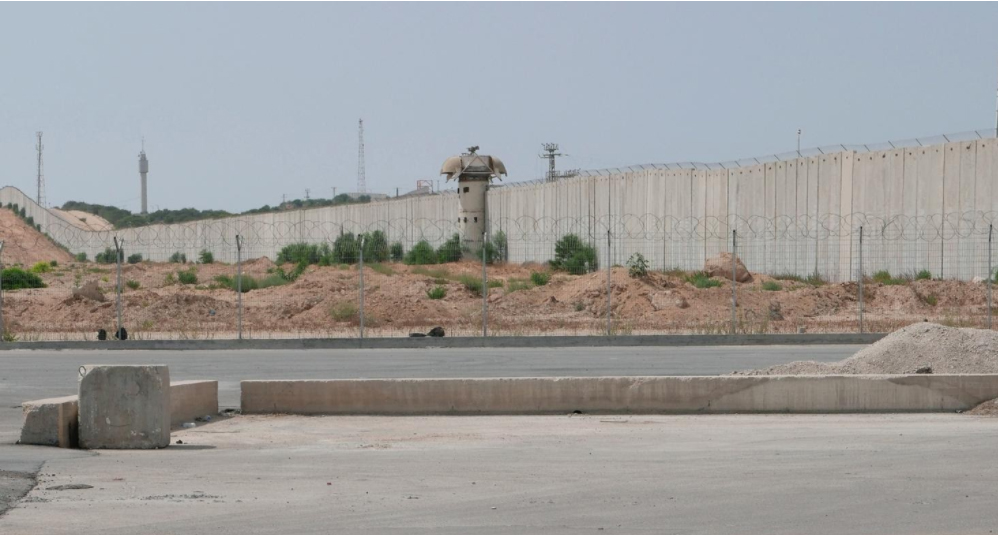
I began work on “Lockdown” in the Fall of 2018 and conceived of the article as a tentative first step in a new book project on the historical geography of confinement. What I wanted to convey in the piece was how the people of Gaza suffer under conditions of incarceration forced upon them as part of daily life, but more importantly how the Gazans share this carceral condition with others, past and present.
It’s always a challenge to title a piece of writing, whether a book or an article, and in this case, I decided on “lockdown” as a colorful single-word metaphor to describe the forcible imprisonment imposed on the Gaza Strip. Over the course of 2019, I worked on the article but of course, never imagined the calamity that awaited the world in March.
When the article appeared in July in the Journal of Palestine Studies, it was humbling to read the introduction to the issue. "We prepared this issue of JPS before the global lockdown in the spring of 2020,” wrote JPS editors Rashid Khalidi and Sherene Seikaly:
One indication of how deeply this moment speaks to our past and future is Gary Fields' prescient article, ‘Lockdown: Gaza through a Camera Lens and Historical Mirror.' Fields links the status of the Gaza Strip to historical carceral sites such as Algeria under French settler colonialism, the antebellum South in the United States, and plague-stricken European towns. He highlights both Palestine's specificity, and its parallels with other times and places. Gaza, and we would suggest Palestine writ large, can best be understood as part of what Fields calls a “broader historical lineage of confinement landscapes.
Many of us working in isolation, especially now, often wonder whether our work resonates with the wider world. It is gratifying to know that at least in some instances, we can reach others with our words, and hopefully make a difference. I was also extremely pleased that the editors of JPS included twelve of my photographs of Gaza [see below].
Gaza is often decried as a uniquely brutal open-air prison, but is the carceral condition imposed on the Gaza Strip part of a broader historical lineage of confinement landscapes? The argument in this essay is that Gaza belongs to a historically longstanding lineage of places and people subjected to practices of incarceration imposed on landscapes, and that the system of confinement in the Gaza Strip has escaped systematic comparison to these other confined spaces. To support this contention, the essay compares the prison-like conditions of Gaza to three examples of carceral environments: the early-modern, plague-stricken European town; the carceral landscape of the “cotton kingdom” in the antebellum American South; and the French system of confinement in the pacification of Algeria. Using both text and photographic images, this article also speculates that situating Gaza within this comparative frame at this moment offers new opportunities for changing the discourse about Gaza to a world seemingly indifferent to the injustices suffered by the Palestinians of Gaza.
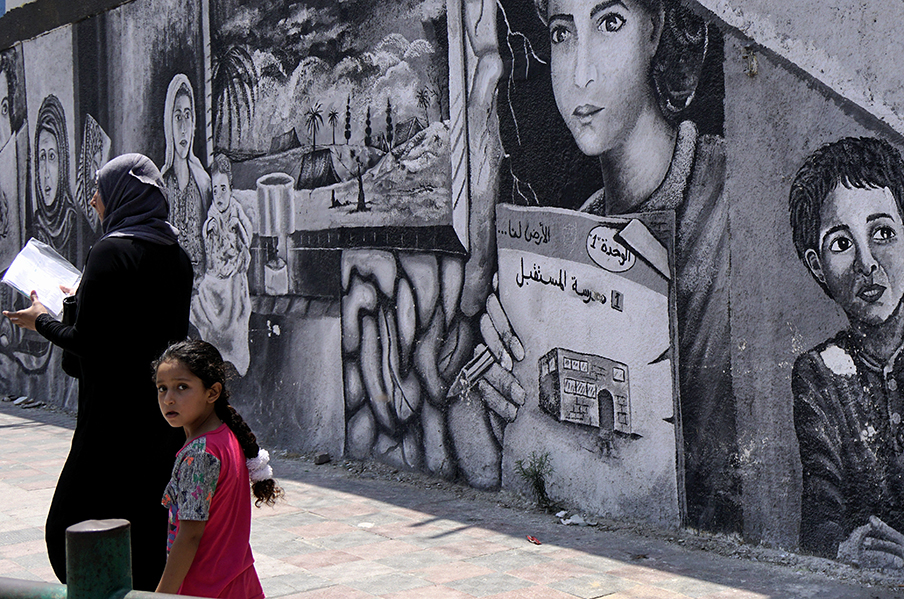
Mural near Al-Azhar University, Gaza City depicting the exile of Palestinians from their homes during the Naqba of 1948 (2017). Photo by Gary Fields
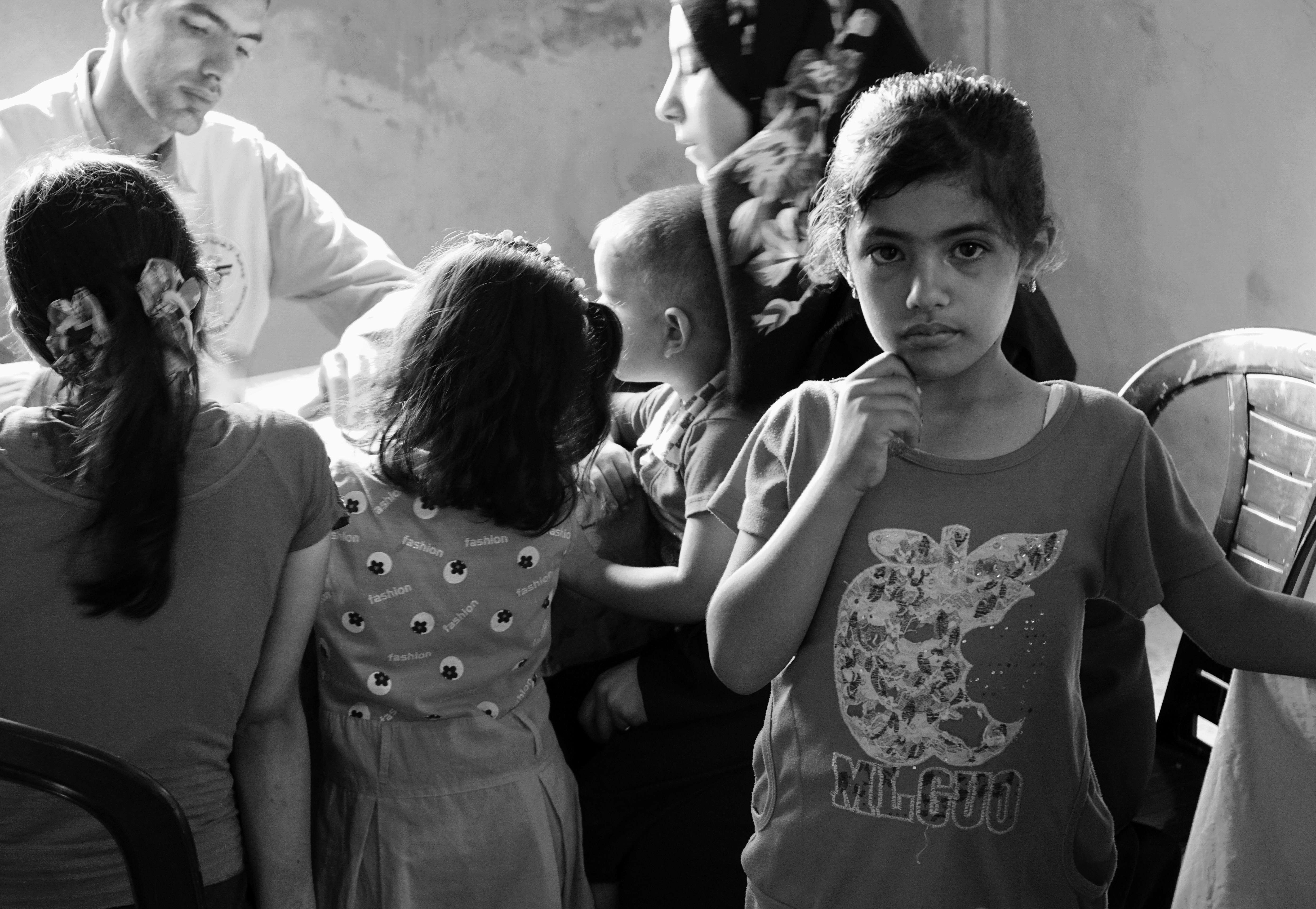
Family being treated in a mobile clinic of the Palestinian Medical Relief Society in Bayt Hanun, Gaza Strip (2015). Photo by Gary Fields
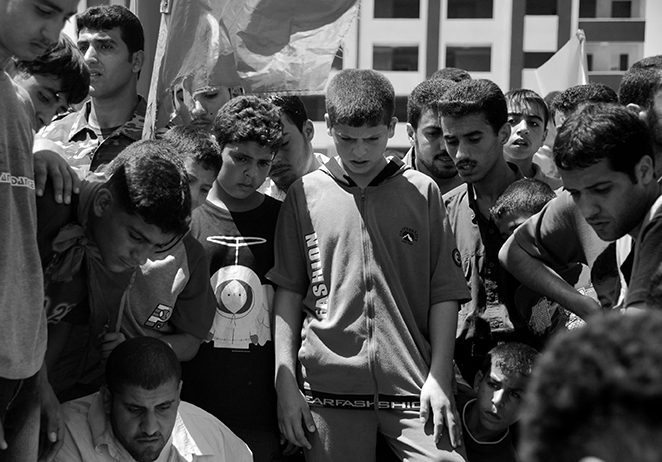
Youth in Gaza City peering into the just-lowered coffin of a 10-year old killed by an errant Israeli missile strike on a car during Operation Summer Rain (2006). Photo by Gary Fields
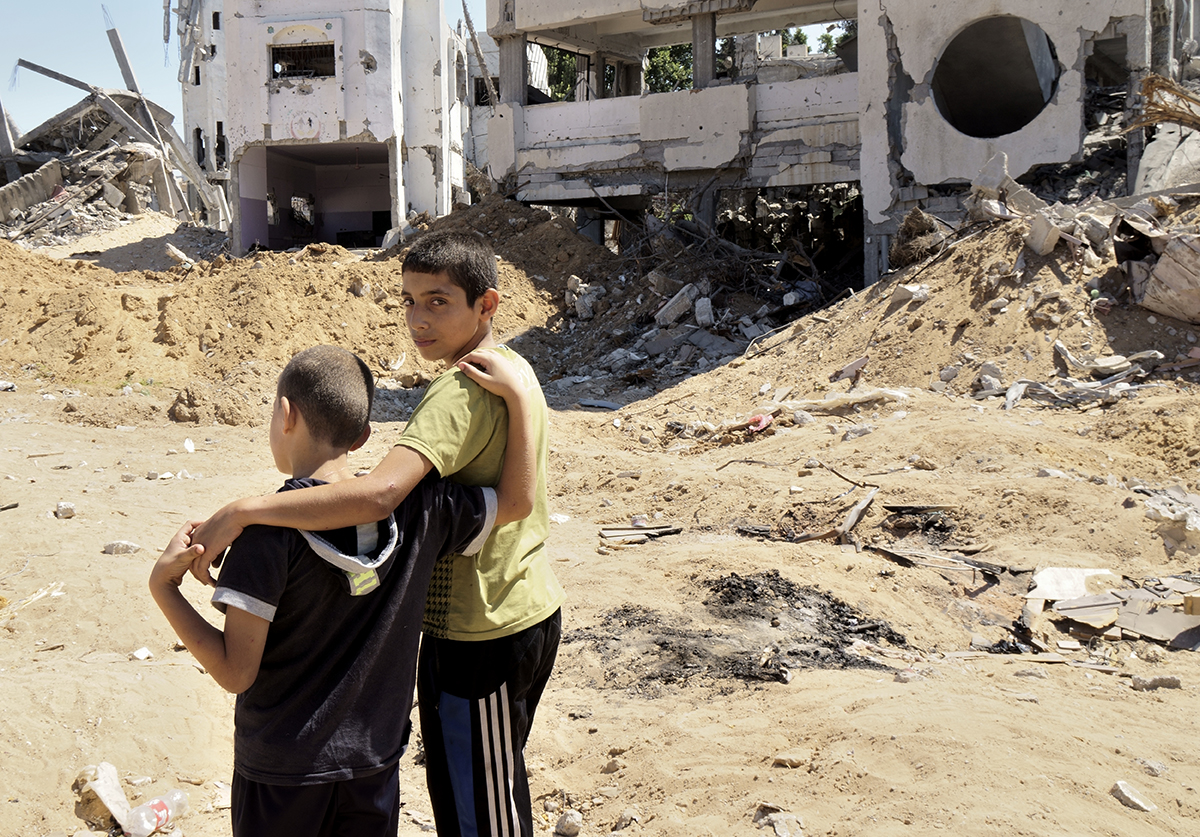
Two brothers in front of their house in the Shuja’iya neighborhood destroyed during Operation Protective Edge (2014). Photo by Gary Fields
Dr. Gary Fields is a Professor of Communication at UC San Diego whose work is situated in the field of historical geography and focuses on conflicts over land, and how landscapes are representations of power. Professor Fields uses comparative case studies to reveal how dominant groups in different historical and geographical environments remake landscapes as a pathway to economic, political and social domination. His research is embedded with a commitment to theoretically-driven, actor-centered accounts of power and territorial transformation and seeks to build a theory of power and the process of development by fusing geography, history, and political economy while maintaining a commitment to a scholarship of activism and critical engagement with the world.
You can read more about Professor Fields' research, publications, teaching, and journalistic engagement at his UC San Diego page here: https://communication.ucsd.edu/people/profiles/fields-gary.html
Serlin, D. (2019). Banking on Postmodernism: Saving Stanley Tigerman’s Illinois Regional Library for the Blind and Physically Handicapped (1978). Future Anterior 16(1), 87-108. https://www.muse.jhu.edu/article/762525.
In 2012, the Illinois Regional Library for the Blind and Physically Handicapped in Chicago, designed in the 1970s by US architect Stanley Tigerman (1930–2019), was converted into the flagship offices of a regional bank. During its heyday, Tigerman’s library was widely recognized as an innovative example of empathic design that engaged the sensory and mobility impairments of its intended patrons. In its conversion to a bank, however, contemporary architects sought to capitalize upon the library as an eccentric icon of mid-1970s postmodernism. In the process, they jettisoned many notable features of Tigerman’s original design. This essay endeavors to show what was lost in the conversion, since the bank chose to preserve that which is most superficially associated with histories of postmodernism while erasing the library’s material commitments to histories of disability. By recovering the original context and guiding principles behind the library’s design and execution, the essay asserts the importance of thinking about disability within practices of historic preservation while also restoring Tigerman’s library to its rightful place within historical assessments of late-twentieth-century urban architecture.
Howard, D. & Geiger, S. Ethnography, Genealogy, and Political Economy in the Post-Market Era of Free & Open-Source Software. CSCW '19 Extended Abstracts. Nov 09 - August 13, 2019, Austin, TX, USA.
Howard D. & Irani, L. 2019. Ways of Knowing When Research Subjects Care. 2019. In Proceedings of the SIGCHI Conference on Human Factors in Computing Systems (CHI ‘19). Awarded Honorable Mention.